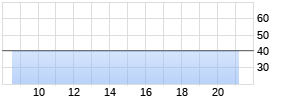
New Data Confirm that Treatment Efficacy Declines with Each Successive Line of Therapy for Women with Metastatic Breast Cancer
PR Newswire
HATFIELD, England, October 6, 2016
HATFIELD, England, October 6, 2016 /PRNewswire/ --
FOR EMEA MEDIA ONLY: NOT FOR AUSTRIAN/SWISS JOURNALISTS
Data presented at the European Society for Medical Oncology (ESMO) Meeting 2016
Results from CASCADE, an epidemiology study, show that efficacy of active agents in locally advanced or metastatic breast cancer progressively declines with each successive therapy cycle.1 Researchers collected data for 443 women from Spain with locally advanced or metastatic breast cancer, to examine the effect of successive lines of therapy on objective response rates (ORR) and disease control rates (DCR) per tumour immunotype. Objective response rates and disease control rates were analysed from the first-line to eighth-line of therapy. With each line of therapy added there was a correlating gradual decline in both ORR and DCR regardless of treatment choice.1
In first- and second-line respectively, patients with all immunotypes continued to show a clinically meaningful response to treatment1 (HER2-/HR+ 40.6-10.7, Triple-negative 40.3-17.7, HER2+/HR+ 37.9-41.3, HER2+/HR- 49.1-38.2). Women with triple-negative breast cancer had particularly poor outcomes after successive lines of therapy, with no response to treatment as early as third-line therapy, compared with 21.8% for patients with HER2-/HR+ breast cancer, 24.3% for HER2+/HR+ and 30.8% for HER2+/HR+. By the time patients were on their eighth-line of therapy, only women with HER2-/HR+ or HER2+/HR+ breast cancer responded to treatment (16.7% and 14.3% respectively).
"This study shows that women with metastatic breast cancer are likely to respond better to treatments in earlier lines of therapy. It is critical that clinicians prioritise the most active drugs in earlier lines, where they may be more likely to result in longer clinical benefit," comments Javier Cortes, specialist physician at the Oncology Department, Hospital Ramón y Cajal, Madrid, Spain.
Data presented at ESMO about Halaven® (eribulin) include results for the ONSITE study that investigates the safety of eribulin in third-line chemotherapy in women with HER2-negative metastatic or locally advanced breast cancer (n=59).2 The primary endpoint of the study was safety and secondary endpoints included clinical benefit rate, overall survival and progression free survival. Grade 3 or 4 haematologic adverse events included febrile neutropaenia (n=3, 5%) and neutropaenia (n=10, 17%).2 The most common grade 3-4 non-haematologic adverse events were alopecia (n=3, 5%) and asthenia (n=2, 3%). Clinical benefit was seen in 56% of patients (n=33), median progression free survival was 4.03 months (95%CI 3.07 to 5.93) and at 20 months 77.8% of patients were still alive (n=44).2
Eribulin is indicated in the European Union for the treatment of women with locally advanced or metastatic breast cancer who have progressed after at least one chemotherapeutic regimen for advanced disease.3 Prior therapy should have included an anthracycline and a taxane in either the adjuvant or metastatic setting unless patients were not suitable for these treatments.
An investigational phase II, multicentre, single arm trial (MERIBEL) examines eribulin as a first-line therapy for taxane resistant HER2- metastatic breast cancer.4 In a group of patients with a poor prognosis (n=53), the median time to progression (TTP) was 4.1 months (95%CI 3.2 to 6.2) and the one-year TTP was 16.2% (95%CI 7 to 37.5). The one-year overall survival (OS) was 68.3% (95%CI 56.5 to 82.5), and median OS has not been reached. The objective response rate was 20.8% (95%CI 9.8 to 31.7) and clinical benefit rate was 26.4% (95% CI 14.5 to 38.3). The most common grade 3 and 4 adverse events respectively were neutropaenia (18.9% and 17.0%), anaemia (3.8% and 0%), peripheral neuropathy (7.5% and 0%) and asthenia (5.7% and 0%). One patient experienced febrile neutropaenia.4
Data presented at ESMO 2016 for a pre-planned subgroup analyses of study 309 in patients (n=309) with histologically confirmed advanced leiomyosarcomas showed no difference in activity between the eribulin and dacarbazine arms.5 Median overall survival was 12.7 months for eribulin versus 13.0 months for dacarbazine (HR=0.93 [95% CI 0.71-1.20]). Study 309 is a phase III randomised trial that compares the efficacy and safety of eribulin to dacarbazine in soft tissue sarcomas (liposarcomas and leiomyosarcomas) in 452 patients (aged 18 or over).6
Published results for study 309 show a median overall survival improvement of 2.6 months (13.5 months versus 11.5 months) in patients with leiomyosarcomas or liposarcomas treated with eribulin versus dacarbazine (HR=0.768, 95% CI 0.618-0.954; P=0.017).6 A subset of people with unresectable advanced or metastatic liposarcomas treated with eribulin had a median 7.2 months longer overall survival than those treated with dacarbazine (15.6 months versus 8.4 months median OS, HR = 0.511; 95% CI 0.346-0.753; P=0.0006). In study 309, the most common adverse events of Grade 3 or 4 (above 5%) observed in the eribulin arm were anaemia, leukopenia, and neutropenia and in the dacarbazine arm were anaemia, neutropenia and thrombocytopenia.6
In May 2016, the European Commission approved a variation to the terms of the Marketing Authorisation of eribulin for the treatment of adult patients with unresectable liposarcomas who have received prior anthracycline containing therapy (unless unsuitable) for advanced or metastatic disease.3
"Eribulin has demonstrated an overall survival benefit, the most important and difficult endpoint to achieve, in two solid tumour types. These data highlight the importance of the use of active therapies in earlier lines of treatment. In particular, real world evidence confirms the benefits of our medicines in real life settings." comments Gary Hendler, Chief Commercial Officer Eisai Oncology Business Group, Chairman and CEO Eisai EMEA.
Eribulin is a microtubule-dynamics inhibitor and structurally modified analogue of halichondrin B, originally isolated from the marine sponge Halichondria okadai. Its mode of action is distinct from other tubulin inhibitors and involves binding to specific sites on the growing positive ends of microtubules to inhibit their growth. Recent data for blood perfusion show that eribulin may lead to remodelling of tumour vasculature, resulting in reoxygenation of deoxygenated (hypoxic) tumour areas.7 A hypoxic tumour microenvironment significantly affects progression and management of cancer and therefore improvement of tumour perfusion may lead to a decrease in tumour metastatic potency.8
The continued development of its oncology portfolio underscores Eisai's human health care (hhc) mission, the company's commitment to innovative solutions in disease prevention, cure and care for the health and wellbeing of people worldwide. Eisai is committed to the therapeutic area of oncology and to addressing the unmet medical needs of people with cancer and their families.
Notes to editors
Metastatic Breast Cancer
More than 300,000 women are diagnosed with breast cancer in Europe every year and about one third subsequently develop metastatic disease. 9 At this advanced stage, the cancer spreads beyond the breast to other parts of the body.
About Soft Tissue Sarcomas
Soft tissue sarcoma is a collective term for a diverse group of malignant tumours. Unlike other cancers, soft tissue sarcomas are often diagnosed with localised disease, and many are amenable to complete surgical removal, yet relapse rates can be as high as 50%.10 Only 50% of people with soft tissue sarcomas are expected to live up to five years.11 Outcomes for patients with advanced disease are poor, with median survival around one year or less.12
Leiomyosarcomas are one of the more common types of sarcoma to develop in adults. They develop from smooth muscle cells and can start anywhere in the body.13 Liposarcomas arise from fat cells and can occur anywhere in the body. Leiomyosarcomas and liposarcomas make up approximately 30% of all cases of soft tissue sarcomas.21
About Eisai Co., Ltd.
Eisai Co., Ltd. is a leading global research and development-based pharmaceutical company headquartered in Japan. We define our corporate mission as "giving first thought to patients and their families and to increasing the benefits health care provides," which we call our human health care (hhc) philosophy. With over 10,000 employees working across our global network of R&D facilities, manufacturing sites and marketing subsidiaries, we strive to realise our hhc philosophy by delivering innovative products in multiple therapeutic areas with high unmet medical needs, including Oncology and Neurology.
As a global pharmaceutical company, our mission extends to patients around the world through our investment and participation in partnership-based initiatives to improve access to medicines in developing and emerging countries.
For more information about Eisai Co., Ltd., please visit www.eisai.com.
References
1 De Paz L, et al. CASCADE study: Pronounced Decline in Treatment Efficacy through the Metastatic Life of Breast Cancer Patients. European Society of Medical Oncology (ESMO) meeting 2016, Poster: 248P
2 Manso L, et al. ONSITE study: Single arm, multicentre, non-randomized open-label trial to evaluate the safety of eribulin in third line chemotherapy in patients with HER2-negative metastatic or locally advanced breast cancer previously treated with anthracyclines and taxanes. European Society of Medical Oncology (ESMO) meeting 2016, Poster: 246P
3 SPC Halaven (updated August 2016). Available at: http://www.medicines.org.uk/emc/medicine/24382 . Accessed October 2016
4 Ortega V, et al. MERIBEL STUDY: First-Line Eribulin for Taxane-Resistant HER2[-] Metastatic Breast Cancer (MBC) Patients (pts). European Society of Medical Oncology (ESMO) meeting 2016, Poster: 238P
5 Blay J, et al. Subgroup analysis of leiomyosarcoma (LMS) patients (pts) from a phase 3, open-label, randomized study of eribulin (ERI) versus dacarbazine (DTIC) in pts with advanced liposarcoma (LPS) or LMS. European Society of Medical Oncology (ESMO) meeting 2016, Poster: 1401PD
6 Schöffski P et al. Eribulin versus dacarbazine in previously treated patients with advanced liposarcoma or leiomyosarcoma: a randomised, open-label, multicentre, phase 3 trial. The Lancet. 2016
7 Kawano S, et al. Antimitotic and Non-mitotic Effects of Eribulin Mesilate in Soft Tissue Sarcoma. Anticancer Research 2016; 36; 1553-1562
8 Kevin L Bennewith and Shoukat Dedhar. Targeting hypoxic tumour cells to overcome metastasis. BMC Cancer 2011;11:504
9 World Health Organisation. Atlas of Health in Europe. 2003. World Health Organization, Regional Office of Europe, Copenhagen, Denmark.
10 Pollock R. Soft Tissue Sarcomas, a Volume in the American Cancer Society Atlas of Clinical Oncology Series 2012
11 National Cancer Institute. Adult Soft Tissue Cancer Survival Rates. Available at: http://www.cancer.org/cancer/sarcoma-adultsofttissuecancer/detailedguide/sarcoma-adult-soft-tissue-cancer-survival-rates . Accessed October 2016
12 Fletcher C, et al. World Health Organization Classification of Tumours of Soft Tissue and Bone (4th Edition). Lyon: IARC Press, 2013
13 Cancer Research UK, Soft Tissue Sarcoma Incidence Statistics. Available at: http://www.cancerresearchuk.org/cancer-info/cancerstats/types/soft-tissue-sarcoma/incidence/ . Accessed October 2016
October 2016 Version 9 - 30.09.16
Eribulin-EU0197 Date of Origination: 12.09.16

Mehr Nachrichten zur Eisai Co Ltd Aktie kostenlos abonnieren
(Mit der Bestellung akzeptierst du die Datenschutzhinweise)

Hinweis: ARIVA.DE veröffentlicht in dieser Rubrik Analysen, Kolumnen und Nachrichten aus verschiedenen Quellen. Die ARIVA.DE AG ist nicht verantwortlich für Inhalte, die erkennbar von Dritten in den „News“-Bereich dieser Webseite eingestellt worden sind, und macht sich diese nicht zu Eigen. Diese Inhalte sind insbesondere durch eine entsprechende „von“-Kennzeichnung unterhalb der Artikelüberschrift und/oder durch den Link „Um den vollständigen Artikel zu lesen, klicken Sie bitte hier.“ erkennbar; verantwortlich für diese Inhalte ist allein der genannte Dritte.





